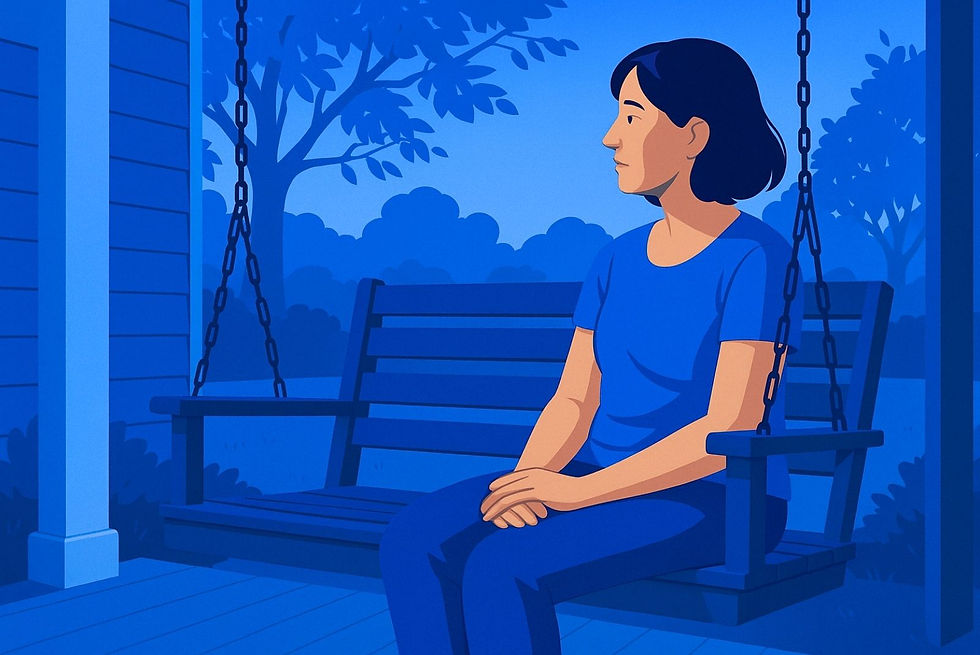Making iPhones Easier for Older Adults
- Elder Love USA
- Feb 20
- 3 min read
Updated: Feb 28

With the release of the new iPhone 16, there’s plenty of excitement around Apple’s latest innovation. But if you’re a caregiver or supporting an older loved one, upgrading to the newest model isn’t necessary to improve their experience. iPhones already come with powerful accessibility features designed to make everyday tasks easier—helping older adults stay connected, independent, and confident in using their device.

Assistive Assistance
Navigating a smartphone can feel overwhelming for older adults, especially if they accidentally tap the wrong icon or get lost in a maze of apps. Assistive Access simplifies the home screen by displaying only the most essential apps in a larger, easy-to-read format.
Caregivers can set up this feature to ensure their loved one only sees the apps they use the most, such as Phone, Messages, and Photos. With a streamlined interface and bigger buttons, it's easier to make calls, send texts, and access favorite features without frustration.

Learn how to enable it here.
You can also watch a video from The Senior List learn more about this features and how to set it up.
Favorite Contacts
Searching through a long contact list can be frustrating, especially during an emergency.
To prevent this, caregivers can set up a Favorites list that puts essential contacts—such as family members, doctors, or caregivers—front and center. This ensures that important numbers are always just a tap away.
If the Do Not Disturb feature is accidentally turned on, calls from these contacts will still go through, reducing the risk of missed calls from family or caregivers.
Learn how to enable it here.
Siri
For older adults who struggle with typing or navigating menus, Siri can be a game-changer.
Caregivers can show their loved ones how to use voice commands to make phone calls, send texts, and even set medication reminders.
With a simple voice request, Siri can read messages aloud, provide directions, or even remind them about upcoming doctor’s appointments.
Enabling Siri ensures that even if using the touchscreen becomes difficult, older adults can still use their phone with ease.
Accessibility Features For vision Small text and low contrast can make reading a smartphone screen difficult. Caregivers can help by enabling accessibility features like Zoom, which allows users to magnify text and images, and Voice Over, which reads aloud what’s on the screen. The iPhone’s Magnifier function can also be a useful tool for reading menus, medication labels, or small print on mail. With these settings turned on, older adults can interact with their phone more comfortably and with less strain. See all the features here. Accessibility Features For Mobility For older adults with limited dexterity or mobility challenges, navigating a touchscreen can be frustrating. Apple’s accessibility features provide alternative ways to control the iPhone. Caregivers can enable Voice Control, allowing their loved ones to operate their device using only their voice. Eye Tracking, available on newer models, lets users navigate their phone with eye movements. Assistive Touch simplifies gestures and creates easy-to-use shortcuts for common actions. These options can make the iPhone more accessible, even for those who have difficulty with traditional touch controls. See all the features here. Accessibility Features For Hearing For older adults with hearing impairments, an iPhone’s standard notification sounds may not be enough. Caregivers can enable LED Flash Alerts, which cause the phone to flash when a call or text comes in, making it easier to notice incoming messages. System Haptics can be turned on to make the phone vibrate for notifications, adding another layer of awareness. The Sound Recognition feature is especially useful, as it allows the iPhone to detect important sounds such as doorbells, fire alarms, or sirens and send an alert when it recognizes them. These features can help ensure that older adults stay aware of important notifications, even if they have trouble hearing them. With the right adjustments, the iPhone can become a powerful tool for independence. By setting up these iPhone features, caregivers can help their loved ones stay connected with family, manage daily tasks more easily, and navigate their phone with confidence.
-------------------------------------------------------------------------------------------------------------------------------
This article is brought to you by Elder Love USA, a leading nonprofit provider of home care services in Riverside County, CA, San Diego County, CA, San Bernardino County, CA, Orange County, CA, Imperial County, CA, and Phoenix, AZ.
Our mission is to provide compassionate and affordable in-home care for older adults in need.




Garbage in garbage out (sirca 1970)
wake up sheep